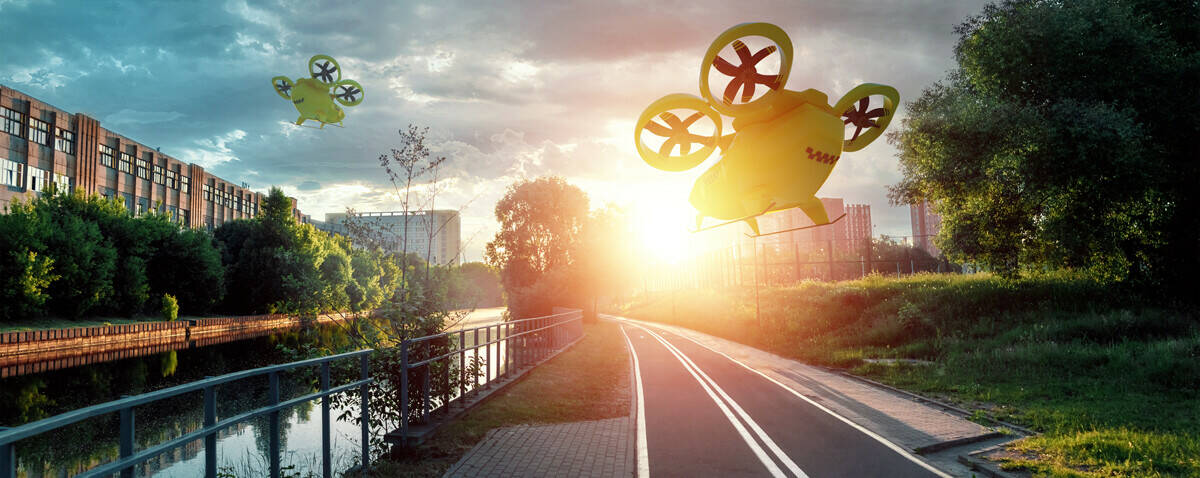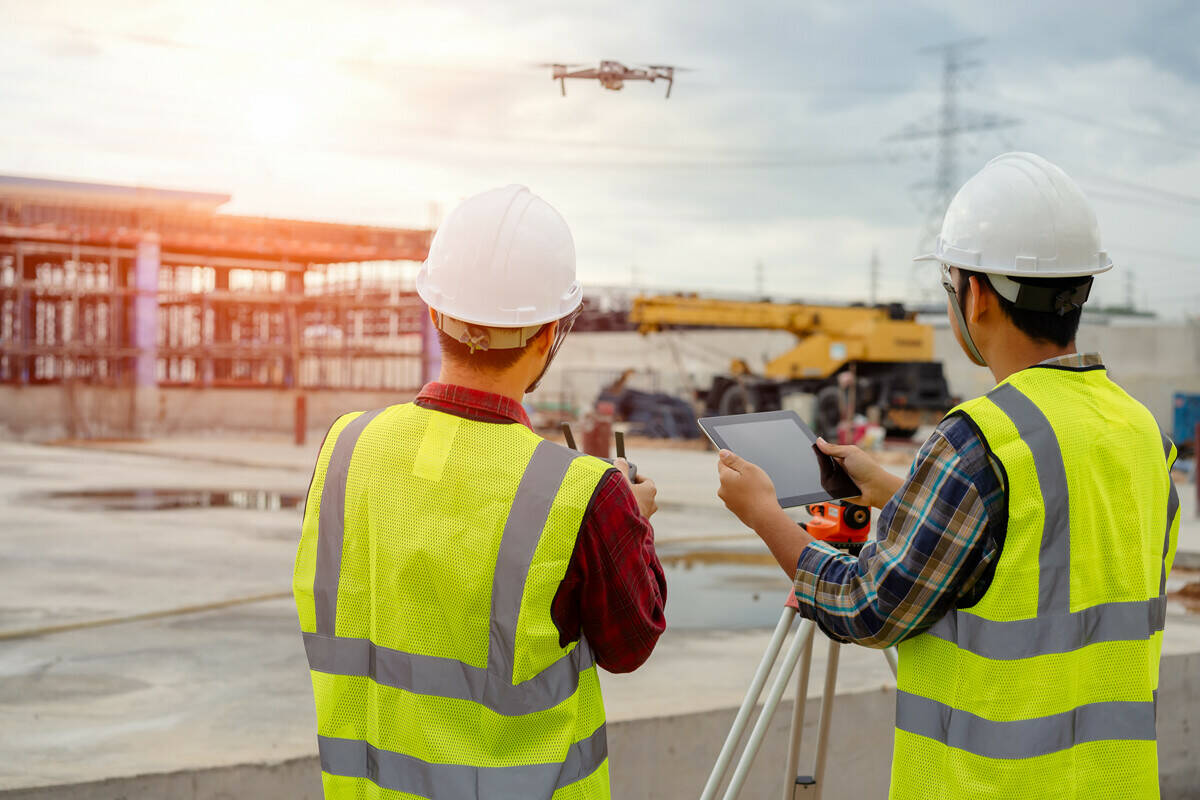Secure, scalable services are essential to incorporate drones into civil airspace.

Airspace Article





“The sort of BVLOS drone operations that we predict to take off first are linear infrastructure inspection, such as power lines and emergency services, including police, fire and search and rescue, next would be drone delivery operations, as these happen mostly in controlled environments. Additionally, there would be automated BVLOS operations in rural or industrial areas, outside controlled or military airspace, where the risk is lower.”
Koen Meuleman
Co-Founder, Unifly
Airspace Article
So, who will those UTM providers be? Air navigation service providers (ANSPs) will naturally want to defend any strategic business position they have. In Europe, where U-space will be a competitive environment, some ANSPs are already monitoring U-space evolution and evaluating their position in the market.
“The core task of an ANSP is managing air traffic, so it’s logical that ANSPs would also be well-placed to manage U-space,” says Meuleman. But he acknowledges that such an outcome would require significant change on the part of the ANSP.
“On the one hand, we have UTM systems that are new technologies developed in an agile cloud environment, and on the other we have ANSPs that have legacy systems in place that work perfectly for manned aircraft,” he adds. “Our view is that if ANSPs want to play a significant role in the new technology market, they need to adapt to it and evolve.”
Some ANSPs have made inroads in this respect by partnering with new technology companies. The collaboration between Droniq and German ANSP, DFS, and between D-flight and Italian concern, ENAV, are just two examples.
This does not mean, however, that UTM will be segregated from ATM. Meuleman says this would be “impossible” as there are so many manned aircraft that operate in low level airspace, including gliders and Ultra Lights. “How could you ever guarantee that two aircraft – one being a drone and the other a manned aircraft – using a different reference could be actually separated from each other?” he asks.
“Ultimately, the only way forward with drones and UTM is through cloud-based services that are secure and easy to scale,” says Meuleman. “As drones are built to be automated, UTM cannot be built to accommodate manual services. UTM must be connected with drones and other UTM systems, which means easy access through Application Programming Interfaces (APIs).”
Trends in drone operations
“On the one hand, we have UTM systems that are new technologies developed in an agile cloud environment, and on the other we have ANSPs that have legacy systems in place that work perfectly for manned aircraft, our view is that if ANSPs want to play a significant role in the new technology market, they need to adapt to it and evolve.”
Koen Meuleman
Co-Founder, Unifly
Drone usage is increasing year on year. Koen Meuleman, Co-Founder at UTM solution provider Unifly, notes the growing interest of large enterprises. “This group is looking at using drones as an extension of their current business,” he says. “This could be done by replacing existing services with more efficient drone operations, such as for infrastructure inspections or by extending their activities, such as aerial photography.”
Indeed, there is decreased leisure drone consumption and increased professional drone use. When looking at the Gartner Hype Cycle (which graphically depicts the maturity, adoption, and social application of specific technologies) for drones, it can be seen that drone technology is maturing quickly, and more money is being invested into professional drone operations.
In terms of technology, remotely controlled visual line of sight (VLOS) drone operations are seen as business as usual. But the move to beyond visual line of sight (BVLOS) and increased automation is already happening.
“The sort of BVLOS drone operations that we predict to take off first are linear infrastructure inspection, such as power lines and emergency services, including police, fire and search and rescue,” says Meuleman. “Next would be drone delivery operations, as these happen mostly in controlled environments. Additionally, there would be automated BVLOS operations in rural or industrial areas, outside controlled or military airspace, where the risk is lower.”
Urban Air Mobility (UAM) is another challenging piece of the jigsaw. UAM operations are more complex and the risks higher. But all the building blocks – such as BVLOS and automation – are there. Within the framework of an equally automated UTM structure, there is no reason why UAM cannot be achieved.
Trends in drone operations

Though the roadmap for drone technology and use seems clear, the regulatory framework is less distinct. Many countries are still looking at how to implement their UTM system.
Europe – where UTM is known as U-space – highlights the harmonisation issue. Here, as Meuleman notes, the “regulation still allows a degree of interpretation by each country”.
Communication standards used between U-space service providers (USSPs) is a case in point. There is no real concept of operations for a USSP or Common Information System Provider (CISP) to follow.
Other challenges include the lack of a common altitude reference and the leeway on how to define a UAS geographical zone using the ED-269 standard. This affects the operational performance requirements for drone geofencing
It is expected that the European Aviation Safety Agency (EASA) will provide more guidance, leaving some flexibility for each country to account for specific conditions. Though systems will need to be interoperable, they do not need to be identical. As is the case with modern ATM, UTM providers simply need to be able to exchange situational awareness and flight information where and when appropriate.
Challenges in harmonisation
Unmanned aircraft system traffic management (UTM) is one of the big items in future airspace planning.
Essentially, UTM is about incorporating drones into civil airspace, particularly near cities, airports and other critical infrastructure. But the broad sweep of the concept covers numerous details, each of which could have a far-ranging impact on the progress of traditional air traffic management (ATM).
Secure, scalable services are essential to incorporate drones into civil airspace.
Read full article

in UTM
Airspace Article



Airspace Article
So, who will those UTM providers be? Air navigation service providers (ANSPs) will naturally want to defend any strategic business position they have. In Europe, where U-space will be a competitive environment, some ANSPs are already monitoring U-space evolution and evaluating their position in the market.
“The core task of an ANSP is managing air traffic, so it’s logical that ANSPs would also be well-placed to manage U-space,” says Meuleman. But he acknowledges that such an outcome would require significant change on the part of the ANSP.
“On the one hand, we have UTM systems that are new technologies developed in an agile cloud environment, and on the other we have ANSPs that have legacy systems in place that work perfectly for manned aircraft,” he adds. “Our view is that if ANSPs want to play a significant role in the new technology market, they need to adapt to it and evolve.”
Some ANSPs have made inroads in this respect by partnering with new technology companies. The collaboration between Droniq and German ANSP, DFS, and between D-flight and Italian concern, ENAV, are just two examples.
This does not mean, however, that UTM will be segregated from ATM. Meuleman says this would be “impossible” as there are so many manned aircraft that operate in low level airspace, including gliders and Ultra Lights. “How could you ever guarantee that two aircraft – one being a drone and the other a manned aircraft – using a different reference could be actually separated from each other?” he asks.
“Ultimately, the only way forward with drones and UTM is through cloud-based services that are secure and easy to scale,” says Meuleman. “As drones are built to be automated, UTM cannot be built to accommodate manual services. UTM must be connected with drones and other UTM systems, which means easy access through Application Programming Interfaces (APIs).”
Trends in drone operations
Though the roadmap for drone technology and use seems clear, the regulatory framework is less distinct. Many countries are still looking at how to implement their UTM system.
Europe – where UTM is known as U-space – highlights the harmonisation issue. Here, as Meuleman notes, the “regulation still allows a degree of interpretation by each country”.
Communication standards used between U-space service providers (USSPs) is a case in point. There is no real concept of operations for a USSP or Common Information System Provider (CISP) to follow.
Other challenges include the lack of a common altitude reference and the leeway on how to define a UAS geographical zone using the ED-269 standard. This affects the operational performance requirements for drone geofencing
It is expected that the European Aviation Safety Agency (EASA) will provide more guidance, leaving some flexibility for each country to account for specific conditions. Though systems will need to be interoperable, they do not need to be identical. As is the case with modern ATM, UTM providers simply need to be able to exchange situational awareness and flight information where and when appropriate.
Challenges in harmonisation
Drone usage is increasing year on year. Koen Meuleman, Co-Founder at UTM solution provider Unifly, notes the growing interest of large enterprises. “This group is looking at using drones as an extension of their current business,” he says. “This could be done by replacing existing services with more efficient drone operations, such as for infrastructure inspections or by extending their activities, such as aerial photography.”
Indeed, there is decreased leisure drone consumption and increased professional drone use. When looking at the Gartner Hype Cycle (which graphically depicts the maturity, adoption, and social application of specific technologies) for drones, it can be seen that drone technology is maturing quickly, and more money is being invested into professional drone operations.
In terms of technology, remotely controlled visual line of sight (VLOS) drone operations are seen as business as usual. But the move to beyond visual line of sight (BVLOS) and increased automation is already happening.
“The sort of BVLOS drone operations that we predict to take off first are linear infrastructure inspection, such as power lines and emergency services, including police, fire and search and rescue,” says Meuleman. “Next would be drone delivery operations, as these happen mostly in controlled environments. Additionally, there would be automated BVLOS operations in rural or industrial areas, outside controlled or military airspace, where the risk is lower.”
Urban Air Mobility (UAM) is another challenging piece of the jigsaw. UAM operations are more complex and the risks higher. But all the building blocks – such as BVLOS and automation – are there. Within the framework of an equally automated UTM structure, there is no reason why UAM cannot be achieved.
Trends in drone operations
Unmanned aircraft system traffic management (UTM) is one of the big items in future airspace planning.
Essentially, UTM is about incorporating drones into civil airspace, particularly near cities, airports and other critical infrastructure. But the broad sweep of the concept covers numerous details, each of which could have a far-ranging impact on the progress of traditional air traffic management (ATM).
